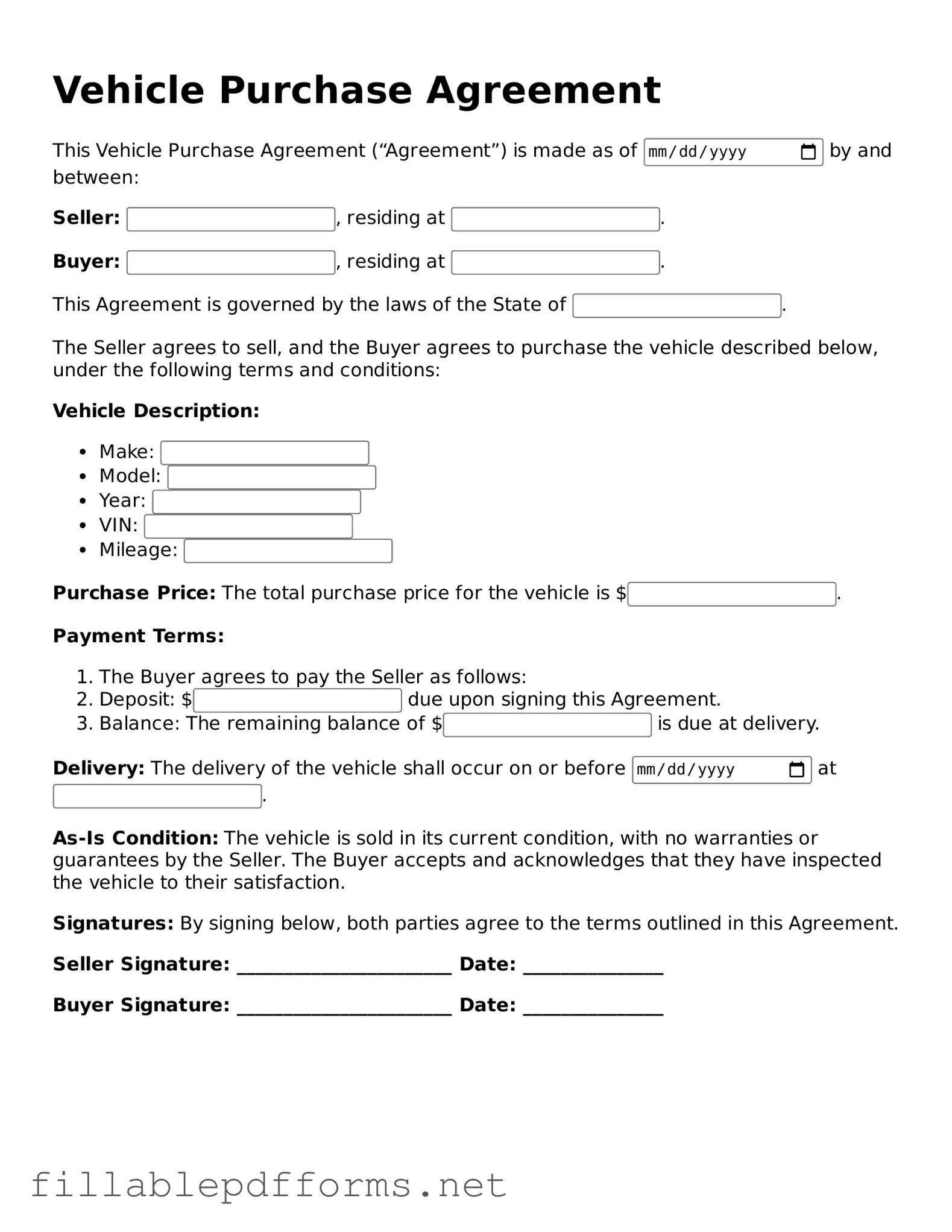Blank Vehicle Purchase Agreement Template
A Vehicle Purchase Agreement is a legal document that outlines the terms and conditions of the sale between a buyer and a seller for a vehicle. This agreement serves to protect both parties by clearly stating the obligations and rights involved in the transaction. Understanding this form is essential for a smooth and transparent vehicle purchase process.
Launch Editor Here
